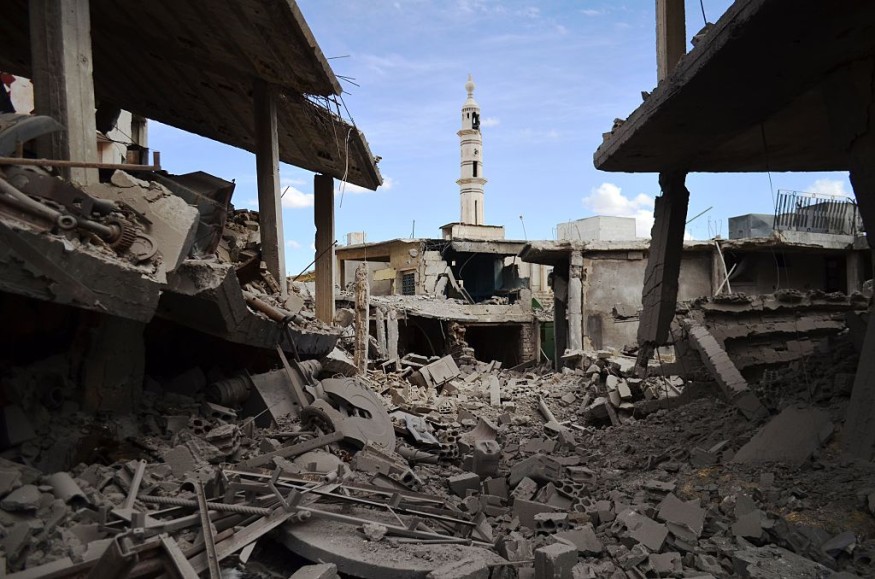
A 'stunning' discovery was unearthed in what was once a key battleground during the Syrian revolution, dating to the fourth century A.D.
A 1,600-year-old mosaic from the Roman era portraying events from the Trojan War was uncovered by archeologists in war-torn Syria, along with the chiseled muscles of the Roman demigod Hercules, and the powerful ancient Roman god Neptune alongside his 40 mistresses, LiveScience reported.
The 65.5-foot-long by 20-foot-wide mural was dug up in Rastan, a town in central Syria near Homs, in a building that was held by civil war rebels until 2018. According to AP News, the General Directorate of Antiquities and Museums, a Syrian government agency, described the mosaic as largely intact and the most important archaeological discovery since the country's conflict began 11 years ago.
Historical Craft Beneath the Ancient Ruins
The mosaic made with colorful, small stones, measuring just 0.5 by 0.5 inches shows mythical scenes from the Trojan and Amazon wars, and said to be the rarest of its kind, as per BBC. It includes a detailed picture of the Roman sea god Neptune and 40 of his mistresses, as well as Hercules slaying Hippolyta, the queen of the Amazon warriors.
Among other archaeological treasures unearthed in the ancient ruins of more than a decade-long war, the latest find was described as the most important archaeological discovery.
"What is in front of us is a discovery that is rare on a global scale," said Hamman Saad, a senior official at Syria's General Directorate of Museums and Antiquities.
Syria is considered as treasure trove for archaeologists and home to some of the well-preserved relics of ancient civilizations. It was until the civil war that most has been destroyed or looted, and also fueled a black market in smaller items like coins and statuettes.
"Unfortunately, there were armed groups that tried to sell the mosaic at one point in 2017 and listed it on social media platforms," Saad told AP News.
'Rich in Detail'
The rare find shows a clear depiction of how the artifacts in the Roman era are 'rich in detail'. The ruined building in which the mosaic was located still cannot be identified, but Saad said it could be a public bathhouse or something else. "We have not finished excavating yet," he mentioned.
In fact, the buildings in Rastan are rich in heritage sites and artifacts waiting to be discovered. "It's clear that the mosaic extends far wider," said Sulaf Fawakherji, a famous actress in Syria and a member of the Nabu Museum's board of trustees who hopes to purchase the other buildings in Rastan.
As a 'historically important' city, Rastan could possibly be a very important heritage city for tourism, according to Fawakherji. After the country's armed conflict, there have not been significant excavation efforts in the town made.
The sites have been looted and destroyed over the past decade of ongoing violent conflict, which includes the Islamic State group taking Palmyra, a UNESCO World Heritage Site.
Rastan, the once a major rebel stronghold and point of intense clashes, was reclaimed by the Syrian government in 2018.
Related article : 67 Million-Year-Old Mummified Dinosaur Skin Revealed to have Bites from an Ancient Crocodile
© 2025 NatureWorldNews.com All rights reserved. Do not reproduce without permission.





